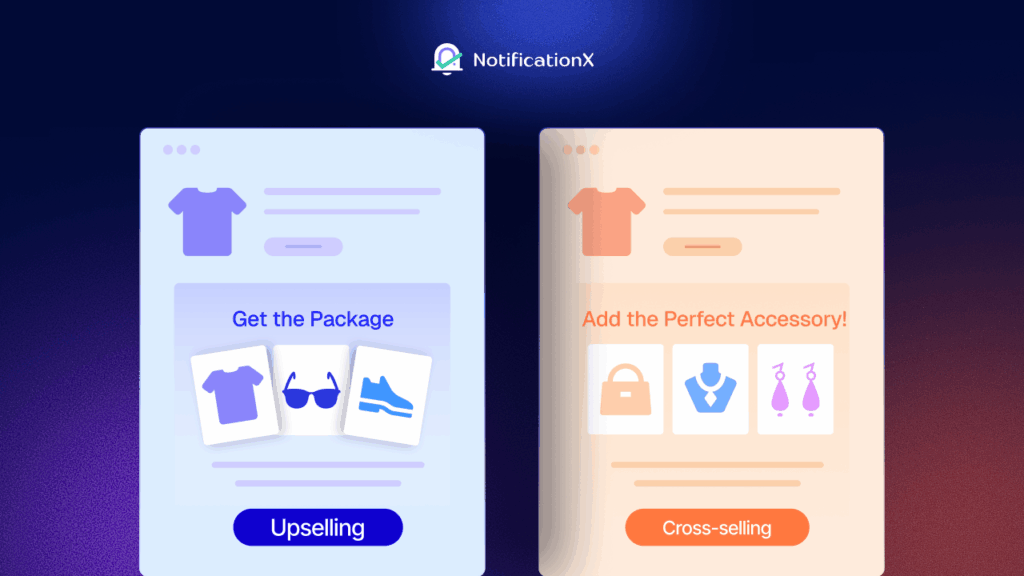Recent years have seen a great deal of interest in non-fungible tokens (NFTs), especially in art and gaming. As well as these popular uses, NFTs are becoming more popular for marketing purposes. A growing number of brands are exploring NFTs as marketing tools to determine whether they will be a passing fad or a lasting tool. This blog examines the role of NFTs in marketing, their future, and how brands can leverage them to stay relevant.

What Are NFTs?
To understand how NFTs shape marketing, we must first understand what NFTs are. NFT (aka Non Fungible Tokens) is a digital asset stored on a blockchain that is unique. A NFT differs from a cryptocurrency like Bitcoin or Ethereum in that it represents ownership of a single item, whether it be digital or physical, rather than serving as an interchangeable unit of ownership. Among the many digital art, music, and video content that can be featured here are virtual real estate, music, and videos.
Because NFTs are rare and unique, they are more valuable than traditional digital assets. The characteristics of their use have led them to become popular in a wide range of industries, including marketing.
NFTs in Marketing – Understanding the Basics
In order to engage consumers, brands use NFTs to create an impression of digital scarcity and exclusivity. This section examines how NFTs are incorporated into marketing plans on the foundational level.

Digital Scarcity And Brand Exclusivity
When NFTs are used in marketing, they create a sense of scarcity and exclusivity. To prove the rarity of a product, brands can offer limited-edition digital products like merchandise, artwork, and experiences. Thus, consumers are more likely to perceive value when they perceive scarcity.
Enhanced Consumer Engagement
As a strategy for enhancing consumer engagement, NFTs have gained popularity in marketing. Along with offering exclusive access and digital collectibles, NFTs also offer special perks and privileges to loyal customers. For example, a fashion brand may issue NFTs in order to unlock behind-the-scenes content or special items.
NFT-Based Loyalty Programs
A new way to reward customers is through the inclusion of NFTs into loyalty programs. With NFTs, customers can earn discounts, exclusive offers, or unique digital experiences that can be redeemed for discounts, exclusive offers, and unique digital experiences instead of traditional loyalty points. This approach makes loyalty programs more fun, interactive, and rewarding for customers, and they receive value beyond discounts.
How Brands Are Using NFTs in Marketing
In marketing, NFTs have become increasingly popular as brands seek to offer consumers exclusive, limited-edition experiences. Businesses are now engaging their customers more effectively through NFTs by enhancing loyalty programs and offering virtual goods.
Collaborations And Partnerships
It has become increasingly popular for brands to work together with influencers, artists, and other companies to create NFT-based campaigns. These partnerships not only provide brands with unique marketing opportunities but also allow them to generate buzz about themselves. Prada and Gucci, for example, have developed new digital offerings through collaborations with NFT artists.
The NFTs often appear in such campaigns as symbols of exclusivity, indicating that the consumer belongs to an elite group. These types of partnerships can enhance a brand’s image, making it appear creative and forward-looking.
NFTs as Virtual Goods
Gaming and virtual experiences are offering a growing number of virtual goods through NFTs, such as skins, avatars, and accessories. Several major gaming brands, such as Ubisoft and Electronic Arts, are already experimenting with NFT-based items. The creation of virtual merchandise that can be bought, sold, and traded allows brands to engage audiences in new ways.
For instance, fashion brands now offer NFTs that represent avatars or digital influencers’ in-game attire. Despite being virtual, these items can be significant status symbols in virtual worlds, just as they are in the real world.
Brand Storytelling Through NFTs
An NFT allows brands to connect more deeply and more personally with their customers. As a result of NFTs, brands are increasingly using them for narrative-building around product launches and events, where consumers collect digital items that contribute to a bigger story. You can create digital collectibles with videos, animations, and interactive experiences as part of an immersive marketing strategy.
Are NFTs a Game-Changer or Just Hype?
Digital world speculators are abuzz with speculation about how Non Fungible Tokens (NFTs) could revolutionize industries. NFTs raise a question, however, in regards to marketing: are they a game-changer or a passing trend?

The Pros of Using NFTs in Marketing
✅ The use of NFTs helps brands differentiate themselves from the competition in an increasingly crowded digital landscape. Marketers who adopt NFTs early can position themselves as innovators, attracting media coverage and consumer interest.
✅ A brand that offers exclusive NFTs is more likely to attract loyal customers since they are given something tangible and unique. The feeling of connection between a customer and a brand leads to greater loyalty and repeat sales for the brand.
✅ One of the benefits of NFTs is the creation of new revenue streams. The ability to sell limited edition digital products or experiences opens up a brand’s entire new business line.
✅ With NFTs, brands can offer consumers interactive experiences and create digital collectibles, for example. Engaging customers in such a way fosters an emotional connection between the brand and the customer.
The Cons of NFTs in Marketing
❌ Among the major concerns about NFTs is their environmental impact. NFTs are typically produced on blockchains, which have a high carbon footprint because they require a lot of energy. Using NFT-based campaigns on eco-friendly platforms may minimize brands’ environmental impact.
❌ The NFT market still has many unknowns, causing a high level of volatility. This volatility can lead to NFTs fluctuating rapidly, resulting in losses for both consumers and brands.
❌ Does exclusivity or alienation matter more? Products that are exclusive can be effective marketing tools, but they can also alienate potential customers who cannot afford them. To avoid excluding too many potential customers, brands should carefully consider the implications of their NFT offerings.
❌ Despite NFTs’ growing popularity, the concept is largely unknown among the general public. Marketing campaigns based on NFTs could be ineffective if a clear understanding of their value is not established.
The Road Ahead for NFTs in Marketing: Promise or Pitfall?
It is undeniable that NFTs have the potential to innovate in marketing despite certain challenges and risks. With NFT technology continuously developing and the market maturing, more brands will adopt NFTs creatively. Through loyalty programs, virtual goods, and immersive storytelling, NFTs are transforming marketing strategies across industries.
Those brands that approach NFTs strategically, focusing on creating real value for consumers, will be able to maximize their potential. Brands’ ability to adapt and innovate will determine whether NFTs become a long-term game-changer or a passing trend.
Bonus: Looking for A Solution That Help You Start Your Own NFT Business?
If you are someone who is using WordPress & looking for ready templates that can help you create NFT marketplace websites, blockchain websites, cryptocurrency websites and other related industries, you need to check out 模板化.

The solution offers 5500+ ready-to-import WordPress templates to help you create stunning websites according to your needs. Templatey already has a website template (both for Elementor & Gutenberg) dedicatedly designed and developed to build websites for the NFT marketplace.
Are NFTs Set to Redefine Marketing?
There is no denying the importance of NFTs in marketing. There may be some exaggeration about NFTs in some circles, but their fundamental principles-scarcity, exclusivity, and engagement hold significant promise for marketers. NFTs are likely to evolve into an important tool in the digital marketing arsenal as more brands experiment with them.
Your brand’s ability to effectively incorporate NFTs into your marketing strategy will determine whether NFTs become a game-changer. Did you find this blog helpful? If yes, please 订阅我们的博客 for more marketing tips and tricks. Also, do not forget to join our Facebook社区 and share your thoughts.
FAQs (Frequently Asked Questions)
1. What are NFTs and how are they used in marketing?
A non-fungible token (NFT) represents ownership of an item stored on a blockchain. The brand uses NFTs in marketing to communicate with its audiences in a variety of ways, create limited-edition experiences, reward customer loyalty, and create innovative marketing campaigns.
2. Can NFTs help increase customer loyalty?
Yes, NFTs can be used in loyalty programs by offering exclusive rewards, discounts, or digital collectibles to loyal customers. As a result of these NFTs, customers are able to develop a deeper connection to the brand and become more engaged with it.
3. Are NFTs in marketing just a passing trend?
NFTs are still in their infancy, but they have the potential to be a game-changer in marketing, offering a way for brands to differentiate themselves and enhance engagement with consumers. In the long run, however, brand strategies will depend on how NFTs are integrated into consumer preferences and how they adapt to their needs.
4. How can NFTs be used to tell brand stories?
The use of NFTs allows brands to create immersive storytelling experiences that are interactive and immersive. Brands can enhance consumer engagement by offering limited-edition digital collectibles, exclusive content, or digital art, enabling consumers to connect more meaningfully with their brand narrative.
5. What are the environmental concerns associated with NFTs?
In many cases, NFTs are minted on blockchains that consume a great deal of energy, causing high levels of CO2 emissions. Therefore, some companies are choosing eco-friendly blockchain platforms to reduce their environmental footprint.
6. Are NFTs only relevant for tech-savvy consumers?
In spite of their popularity initially appealing to tech-savvy individuals, NFTs are becoming more and more popular with consumers. The use of NFTs in marketing must be explained to the audience so that they can adopt them widely.
7. Can NFTs be used for virtual products or experiences?
Yes, NFTs are already being used to represent virtual goods like in-game items, avatars, and fashion accessories. NFTs also allow brands to provide customers with virtual experiences, such as virtual reality and gaming environments.
8. How can a brand ensure its NFT marketing campaign is successful?
To be successful with NFTs in marketing, brands must offer unique, exclusive, or collectible items to their consumers. Additionally, it is important to educate their audience and make the experience accessible and engaging for them.






